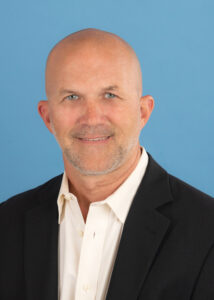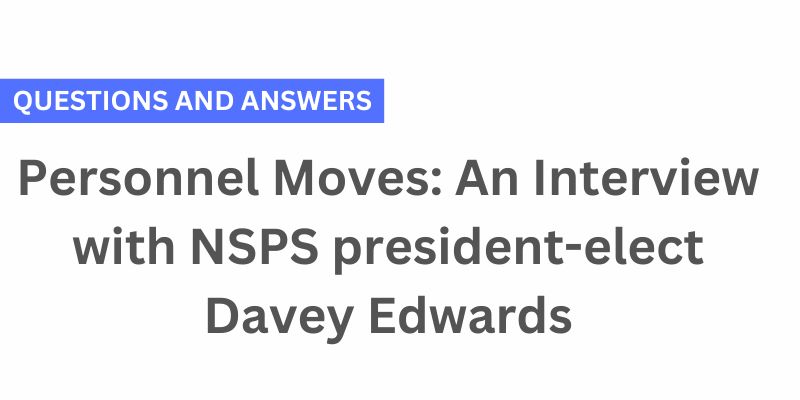Questions and Answers
How the NSPS is working to tap new sources to expand the surveying labor pool

NSPS president-elect Davey Edwards
In an interview with xyHt’s Linda Duffy, NSPS president-elect Davey Edwards, shares information about ongoing NSPS initiatives intended to alleviate shortages of qualified workers in the survey profession. Edwards is survey director for Baseline|DCCM,
What would you say is the biggest challenge facing the surveying profession today?
The biggest challenge is hiring qualified professionals as we see a higher level of attrition due to aging and other factors. Surveying is evolving into a profession that needs more technical support and relevant training.
We’ll always have licensed individuals, but there is a role for paraprofessionals who can complete projects up to a certain level, similar to the partnership between a doctor and a nurse practitioner. In surveying, the transition is exciting because there is a range of opportunities depending on your interest.
How is the educational system adapting?
The Education Committee at NSPS has developed the Certified Survey Technician (CST) Program to offer a career path with standardized curriculum and exams. Every individual can level up to Level IV CST through exams, which makes them more marketable for field and office positions.
The two-year programs at local community colleges teach students the technical knowledge required to pass the CST exams so they can start working right away. They also provide the foundation needed to pursue a four-year degree program and licensure.
What is being done to encourage the younger generation to enter the surveying profession?
We’re reaching out to students in junior high and high school to raise awareness about surveying. A great example is at Klein Collins High School in Klein, Texas, where M’Lee Brooks, the Career and Technical Education (CTE) Counselor for the geospatial program, has formed a partnership with Lone Star College-Montgomery. Students can enroll and earn up to 60 hours of community college credit (the equivalent of an associate degree).
They can also graduate high school with a drone pilot’s license and a CST Level I if they pass the exam, which starts them on the path to a paraprofessional career. NSPS is helping standardize a national program and is promoting it to the American School Counselor Association (ASCA) to encourage counselors to talk to students about surveying as a career option.
Besides encouraging young people to enter the surveying profession, is NSPS recruiting from other sources?
Yes. Our current president, Bob Akins, has been involved in the surveying profession for more than 40 years after serving his country in the Army as a surveyor. Bob is working with Raymond Amador, Jr., the Military Program Manager at SAM, LLC, to create a civilian career path for military personnel coming out of various armed services with survey experience.
How does the experience of former military personnel apply to surveying?
The majority of personnel being recruited already understand how to read maps, how to layout construction sites, and how to collect data needed for engineering. We’d like to work with the Department of Defense to get these people qualified through the CST Program.
When they come out of the military, we know what skills they have and where they would fit into a surveying company. Surveying provides a good quality of life for ex-military as civilians, and they can help fill the void in our labor pool.
What other groups would benefit from the NSPS CST Program?
We think the CST Program could also help set standards for tribal surveyors on reservations. You don’t have to be state licensed to survey on reservations, but if land is sold by the trust to a private owner, the property description must meet state standards. The CST Program is recognized nationwide and would establish qualifications for tribal surveyors.
Technology is changing so quickly we must focus on education and awareness from junior high through college to build a supply of qualified paraprofessionals and licensed surveyors. With the initiatives currently being put in place, I feel we’re moving in the right direction.

